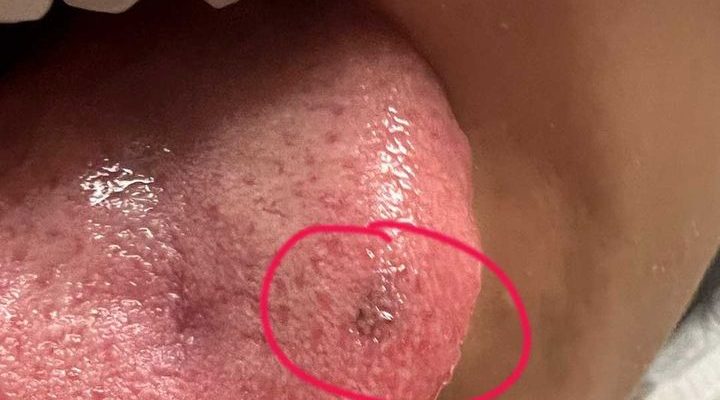
Finding a black spot on your tongue can be alarming. Our tongues are usually pink and relatively uniform in color, so any noticeable change can trigger concerns. While a black spot on the tongue is not always a cause for panic, it is important to understand the potential causes, when to seek medical advice, and what steps to take to address it.
In this article, we’ll explore the possible reasons for black spots on the tongue, what symptoms to look out for, and how to proceed if you discover one.
Common Causes of Black Spots on the Tongue
Hyperpigmentation: Hyperpigmentation occurs when there is an overproduction of melanin, the pigment responsible for skin and hair color. On the tongue, this can manifest as dark or black spots. Hyperpigmentation is generally harmless and often related to genetics or harmless skin conditions like oral melanotic macules.
Tongue Trauma or Injury: Biting your tongue, irritation from hot foods, or a sharp object can cause bruising or trauma. This can sometimes result in a black or dark spot as blood vessels break, similar to a bruise on the skin.
Lingua Villosa Nigra (Black Hairy Tongue): This condition occurs when the tiny bumps on the tongue, known as papillae, become elongated and stained. The dark appearance is due to trapped bacteria, food, or tobacco use. Despite its unsettling name, black hairy tongue is usually benign and can be resolved with good oral hygiene.
Oral Melanoacanthoma: This is a rare, benign condition that appears as a dark, rapidly growing lesion on the oral mucosa, including the tongue. It is more common among people of African descent and usually resolves on its own after a biopsy confirms it is not malignant.
Medications and Medical Treatments: Certain medications, such as antibiotics or medications for high blood pressure, and treatments like chemotherapy, can lead to changes in the pigmentation of the tongue. The condition, known as drug-induced pigmentation, can appear as black or dark spots.
Smoking and Tobacco Use: Tobacco products can stain the tongue and lead to black spots. This is often seen in individuals who chew tobacco or smoke regularly, causing discoloration of the tongue’s surface.
Fungal Infections: While less common, some fungal infections like Candida can cause dark patches on the tongue, especially in immunocompromised individuals.
Oral Cancer: Though rare, a black spot on the tongue can be an early sign of oral cancer, particularly if it is irregular in shape, grows over time, or is accompanied by other symptoms such as pain, difficulty swallowing, or a persistent sore.
When to See a Doctor
While many causes of black spots on the tongue are benign, certain characteristics should prompt a visit to a healthcare provider:
Persistent Changes: If the black spot does not disappear after a few days or weeks, especially if it’s getting larger.
Irregular Borders or Color: If the spot has an irregular shape, uneven color, or is asymmetrical.
Accompanied Symptoms: Symptoms such as pain, bleeding, swelling, numbness, a burning sensation, or difficulty swallowing.
Rapid Growth: If the spot or lesion is growing quickly, it warrants a prompt medical evaluation.
Additional Oral Lesions: If you notice multiple spots or lesions appearing in different areas of the mouth.
Health History: Individuals with a history of oral cancer, tobacco use, or significant alcohol consumption should be more vigilant and consult a healthcare provider.
Diagnosing the Cause of Black Spots on the Tongue
A healthcare provider will typically begin with a thorough examination of your mouth and medical history. They may ask about your oral hygiene practices, diet, use of tobacco or alcohol, medications, and any recent injuries or infections. Depending on the findings, the doctor may recommend the following:
Biopsy: A small sample of tissue from the black spot may be taken for further examination under a microscope to rule out cancer or other serious conditions.
Blood Tests: These can help identify systemic issues that might be affecting pigmentation, such as vitamin deficiencies or hormonal imbalances.
Cultures or Swabs: If an infection is suspected, a swab of the affected area might be taken to identify any bacterial or fungal causes.
What You Can Do at Home
While waiting for a medical evaluation, or if the black spot appears to be a minor issue, there are several steps you can take at home to help manage or possibly improve the condition:
Maintain Good Oral Hygiene: Brush your teeth twice daily, clean your tongue with a tongue scraper or brush, and floss regularly. This helps remove any debris, bacteria, or staining substances that could contribute to discoloration.
Quit Smoking and Avoid Tobacco Products: Smoking and tobacco use are significant contributors to oral health issues, including discoloration of the tongue. Quitting can help prevent further damage and promote overall oral health.
Stay Hydrated: Drinking plenty of water can help flush out toxins and keep your mouth moist, reducing the likelihood of infections and promoting a healthier oral environment.
Monitor Dietary Habits: Certain foods and drinks, especially those that are dark or acidic (like coffee, tea, and soda), can stain the tongue. Reducing consumption of these can help prevent discoloration.
Avoid Irritants: If the black spot resulted from trauma, avoid hard or sharp foods and be cautious while eating to allow the tongue to heal.
Regular Dental Checkups: Seeing your dentist regularly can help catch any issues early and ensure your oral hygiene is optimal.
While discovering a black spot on your tongue can be concerning, it is often due to benign conditions that are easily treatable or reversible. However, it is important to remain vigilant and monitor any changes. If the black spot persists, grows, or is accompanied by other symptoms, consult a healthcare professional for a thorough evaluation. Taking proactive steps with oral hygiene and lifestyle changes can also help maintain good oral health and prevent future issues.



